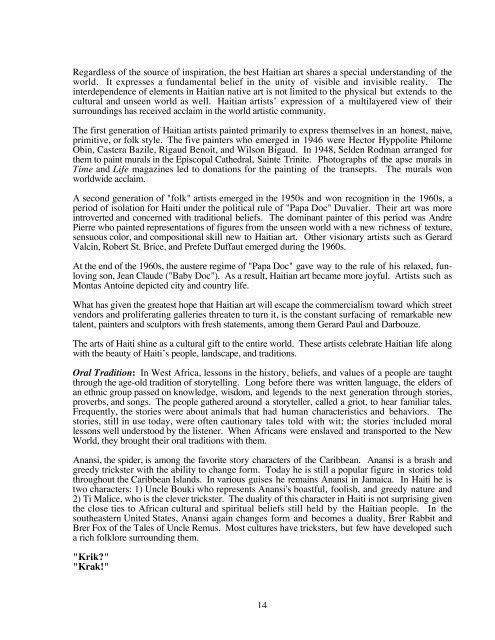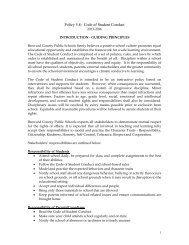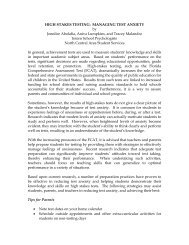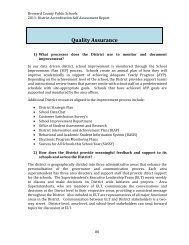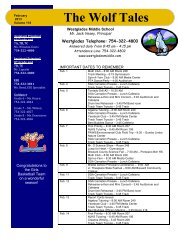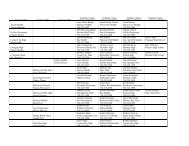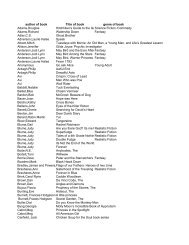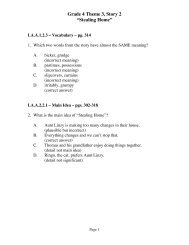Haitian Culture Curriculum Guide
Haitian Culture Curriculum Guide
Haitian Culture Curriculum Guide
Create successful ePaper yourself
Turn your PDF publications into a flip-book with our unique Google optimized e-Paper software.
Regardless of the source of inspiration, the best <strong>Haitian</strong> art shares a special understanding of the<br />
world. It expresses a fundamental belief in the unity of visible and invisible reality. The<br />
interdependence of elements in <strong>Haitian</strong> native art is not limited to the physical but extends to the<br />
cultural and unseen world as well. <strong>Haitian</strong> artists’ expression of a multilayered view of their<br />
surroundings has received acclaim in the world artistic community.<br />
The first generation of <strong>Haitian</strong> artists painted primarily to express themselves in an honest, naive,<br />
primitive, or folk style. The five painters who emerged in 1946 were Hector Hyppolite Philome<br />
Obin, Castera Bazile, Rigaud Benoit, and Wilson Bigaud. In 1948, Selden Rodman arranged for<br />
them to paint murals in the Episcopal Cathedral, Sainte Trinite. Photographs of the apse murals in<br />
Time and Life magazines led to donations for the painting of the transepts. The murals won<br />
worldwide acclaim.<br />
A second generation of "folk" artists emerged in the 1950s and won recognition in the 1960s, a<br />
period of isolation for Haiti under the political rule of "Papa Doc" Duvalier. Their art was more<br />
introverted and concerned with traditional beliefs. The dominant painter of this period was Andre<br />
Pierre who painted representations of figures from the unseen world with a new richness of texture,<br />
sensuous color, and compositional skill new to <strong>Haitian</strong> art. Other visionary artists such as Gerard<br />
Valcin, Robert St. Brice, and Prefete Duffaut emerged during the 1960s.<br />
At the end of the 1960s, the austere regime of "Papa Doc" gave way to the rule of his relaxed, funloving<br />
son, Jean Claude ("Baby Doc"). As a result, <strong>Haitian</strong> art became more joyful. Artists such as<br />
Montas Antoine depicted city and country life.<br />
What has given the greatest hope that <strong>Haitian</strong> art will escape the commercialism toward which street<br />
vendors and proliferating galleries threaten to turn it, is the constant surfacing of remarkable new<br />
talent, painters and sculptors with fresh statements, among them Gerard Paul and Darbouze.<br />
The arts of Haiti shine as a cultural gift to the entire world. These artists celebrate <strong>Haitian</strong> life along<br />
with the beauty of Haiti’s people, landscape, and traditions.<br />
Oral Tradition: In West Africa, lessons in the history, beliefs, and values of a people are taught<br />
through the age-old tradition of storytelling. Long before there was written language, the elders of<br />
an ethnic group passed on knowledge, wisdom, and legends to the next generation through stories,<br />
proverbs, and songs. The people gathered around a storyteller, called a griot, to hear familiar tales.<br />
Frequently, the stories were about animals that had human characteristics and behaviors. The<br />
stories, still in use today, were often cautionary tales told with wit; the stories included moral<br />
lessons well understood by the listener. When Africans were enslaved and transported to the New<br />
World, they brought their oral traditions with them.<br />
Anansi, the spider, is among the favorite story characters of the Caribbean. Anansi is a brash and<br />
greedy trickster with the ability to change form. Today he is still a popular figure in stories told<br />
throughout the Caribbean Islands. In various guises he remains Anansi in Jamaica. In Haiti he is<br />
two characters: 1) Uncle Bouki who represents Anansi's boastful, foolish, and greedy nature and<br />
2) Ti Malice, who is the clever trickster. The duality of this character in Haiti is not surprising given<br />
the close ties to African cultural and spiritual beliefs still held by the <strong>Haitian</strong> people. In the<br />
southeastern United States, Anansi again changes form and becomes a duality, Brer Rabbit and<br />
Brer Fox of the Tales of Uncle Remus. Most cultures have tricksters, but few have developed such<br />
a rich folklore surrounding them.<br />
"Krik?"<br />
"Krak!"<br />
14


